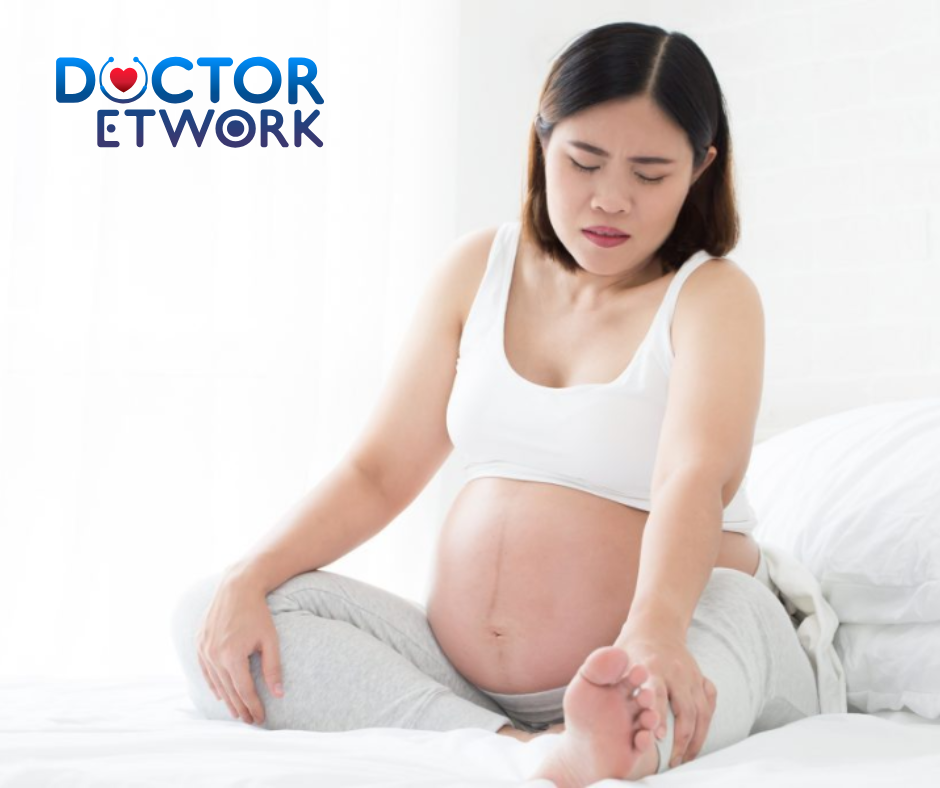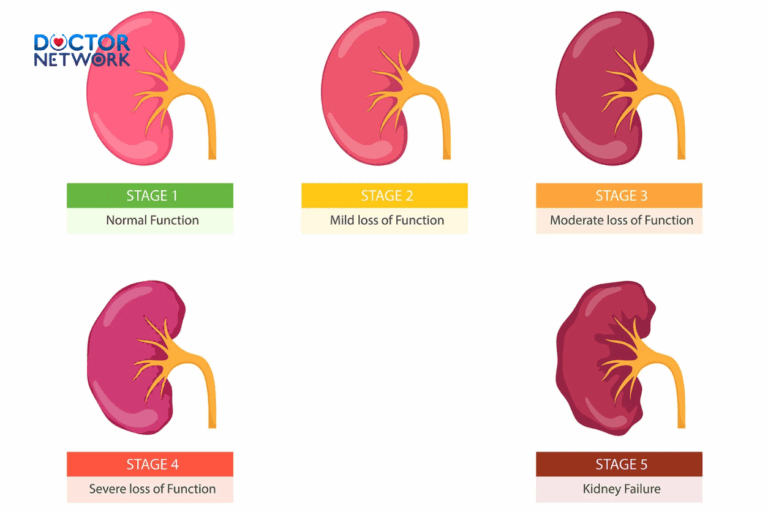Donating plasma is a vital act that can save lives, providing crucial components like immunoglobulins and clotting factors used in treating a variety of medical conditions such as hemophilia, immune deficiencies, and severe burns. Plasma donation, often referred to as plasmapheresis, involves extracting a portion of blood plasma and returning the remaining blood components to the donor. While altruistic, this act raises important questions about safety, especially for pregnant women.
Can You Donate Plasma While Pregnant? – The core concern is whether it is safe for women during pregnancy to donate plasma, considering the physiological changes their bodies undergo. This article aims to thoroughly examine the risks associated with plasma donation during pregnancy, explain why it is generally discouraged, and explore safe alternatives for contributing to society while expecting. We will also discuss the timing for resuming donation postpartum and address common misconceptions through expert insights and evidence-based guidelines.
Semantic Entities: Plasma donation, plasmapheresis, pregnancy, blood components, immunoglobulin, blood clotting factors, health safety, blood donation regulations, immune system, blood volume, medical treatment.
II. No, You Cannot Donate Plasma While Pregnant

Can pregnant women donate plasma? The answer is a definitive no. Women who are pregnant are advised against donating plasma due to significant health risks and regulatory restrictions.
Why? Pregnancy induces profound physiological changes that temporarily alter blood composition and volume, making plasma donation unsafe. The American Red Cross, Octapharma Plasma, and other leading organizations explicitly prohibit pregnant women from donating blood or plasma to protect fetal and maternal health.
| Key Point | Explanation |
|---|---|
| Pregnancy is a contraindication | Medical guidelines from organizations like the FDA classify pregnancy as an absolute contraindication for plasma donation. |
| Risk of adverse effects | Potential dehydration, anemia, and hypovolemia could jeopardize maternal and fetal well-being. |
| Regulatory restrictions | Blood banks and plasma centers enforce strict policies based on scientific evidence. |
III. Why Pregnant Women Cannot Donate Plasma

A. Physiological Changes in the Maternal Body
What changes occur in a pregnant woman’s body that prevent plasma donation?
Pregnancy causes essential physiological adaptations, particularly in blood volume and plasma components, which make donation unsafe.
1. Increased Blood Volume and Plasma Composition Changes
During pregnancy, blood volume increases by approximately 30-50%, primarily to support fetal development and placental function. The plasma, which constitutes about 55-60% of blood volume, expands significantly.
| Blood Volume Changes During Pregnancy | Details |
|---|---|
| Normal blood volume | 4.5-5.5 liters in non-pregnant women |
| During pregnancy | Increases to 6-7 liters, depending on gestational age |
| Purpose | Ensures oxygen and nutrient transport to the fetus via the placenta |
2. Changes in Plasma Protein Levels
Alongside volume expansion, plasma proteins such as albumin, globulins, and clotting factors fluctuate to accommodate fetal growth.
- Albumin levels may decrease due to hemodilution
- Globulin levels may increase to support immune function
- Coagulation factors (e.g., fibrinogen, prothrombin) also vary, affecting blood clotting dynamics
These physiological shifts are designed to optimize fetal development but render plasma unsuitable for donation, as removing plasma could disturb the delicate balance necessary for a healthy pregnancy.
B. Risks to the Mother
What are the specific health risks of plasma donation during pregnancy?
The process of plasma donation involves removing a significant volume of plasma, which can lead to dehydration, electrolyte imbalance, and reduced blood volume.
- Dehydration and Hypovolemia: Can cause dizziness, fainting, and increased risk of falls.
- Anemia and Iron Deficiency: Plasma donation can temporarily lower plasma proteins and iron reserves, aggravating anemia common in pregnancy.
- Chronic Fatigue and Mitochondrial Stress: Decreased plasma volume and protein levels can intensify fatigue and compromise maternal energy levels.
Table 1: Physiological Risks of Plasma Donation in Pregnancy
| Risk | Description | Potential Consequences |
|---|---|---|
| Dehydration | Loss of plasma volume | Dizziness, hypotension |
| Anemia | Reduced plasma proteins and iron | Fatigue, weakness |
| Hypovolemia | Decreased blood volume | Fainting, organ hypoperfusion |
C. Risks to the Fetus and the Child
Is plasma donation safe for the fetus?
No. The alterations in maternal blood volume and plasma proteins directly impact placental blood flow, potentially causing fetal hypoxia or growth restriction. Moreover, maternal hypovolemia can lead to decreased oxygen and nutrient delivery, jeopardizing fetal health.
IV. What Happens if You Donate Plasma During Pregnancy?
Could there be immediate risks?
While some women may not experience immediate adverse effects, the potential for delayed or long-term complications remains significant.
Actionable Steps:
- Report immediately if plasma donation occurs unknowingly during pregnancy — inform the plasma donation center and your healthcare provider.
- Seek medical advice: A healthcare professional will evaluate any potential impacts and monitor maternal and fetal health through ultrasounds and blood tests.
Plasma Processing and Safety Protocols
In cases where plasma has been donated during pregnancy, the plasma is typically not used for therapeutic purposes. Blood centers adhere to strict protocols, including discarding such plasma to prevent risks associated with HLA sensitization and immune reactions.
| Table 2: Steps After Accidental Plasma Donation During Pregnancy | Details |
|---|---|
| Immediate notification | Contact healthcare provider and plasma center |
| Medical assessment | Ultrasound, blood tests, vital signs |
| Monitoring | Fetal health, maternal hydration, and vitals |
V. Donating Plasma While Breastfeeding
Can a woman donate plasma during breastfeeding?
It is generally not recommended to donate plasma while actively breastfeeding.
Why?
The postpartum period involves ongoing recovery, with increased nutritional demands and fluid needs to produce breast milk.
Potential Impact:
- Temporary reduction in plasma volume might decrease milk production.
- Loss of nutrients and fluids could impair maternal recovery and infant nutrition.
When is it safe to donate again?
Women are advised to wait until they have fully recovered physically, typically after 6 months postpartum, and only after consulting with healthcare providers.
Table 3: Criteria for Resuming Plasma Donation Postpartum
| Criteria | Details |
|---|---|
| Time elapsed | Minimum 6 months after delivery |
| Medical clearance | Physician assessment of recovery and iron levels |
| Nutritional status | Adequate intake of fluids, iron-rich foods, and nutrients |
VI. When Can You Donate Plasma After Giving Birth?
How long should women wait before donating plasma postpartum?
The recommended waiting period is at least 6 months following childbirth, ensuring full maternal recovery.
Why 6 months?
Postpartum recovery involves restoring blood volume, replenishing nutrients like iron and zinc, and stabilizing plasma protein levels.
Guidelines for safe donation:
- Consult your healthcare provider for personalized advice.
- Ensure balanced hydration and nutritious diet to support recovery.
- Confirm that all blood tests (hemoglobin, hematocrit) meet donation criteria.
Steps to Prepare for Donation:
- Medical evaluation by a healthcare professional
- Hydration — drink plenty of fluids in the days leading up to donation
- Nutritional support — consume iron-rich and protein-rich foods
- Center verification — check eligibility requirements at the local blood/plasma center
VII. Alternative Ways to Contribute to the Community During Pregnancy
What are other meaningful ways to help society if plasma donation isn’t possible?
Even when donation isn’t feasible, there are numerous other impactful actions:
- Volunteer at local charities: Food banks, shelters, and community centers.
- Financial support: Donate to blood banks, health charities, or maternal health programs.
- Raise awareness: Educate friends and family about blood donation safety and importance.
- Organize fundraising or material drives: Collect clothes, baby supplies, or non-perishable food for needy families.
List of Alternative Contribution Ideas:
- Volunteering at community health events
- Supporting maternal and child health initiatives
- Promoting blood donation awareness campaigns
These actions contribute significantly to public health and foster community resilience.
VIII. Expert Insights & Frequently Asked Questions (FAQs)
A. Medical Expert Perspective
Why do healthcare professionals advise against plasma donation during pregnancy?
Pregnancy involves complex physiological adaptations that are sensitive to fluid and protein loss. Removing plasma can compromise maternal blood volume, impair fetal oxygenation, and increase the risk of hypotension and anemia. National health authorities like the CDC and FDA emphasize that pregnancy is a contraindication for plasma donation based on cumulative scientific evidence.
B. Common Misconceptions
- Myth 1: “Plasma donation is safer than whole blood donation during pregnancy.”
Reality: Both procedures involve removing blood components, which can destabilize the body’s delicate balance during pregnancy. Neither is recommended during this period. - Myth 2: “If I cannot donate plasma during pregnancy, I cannot help.”
Reality: There are numerous ways to contribute, including volunteering, financial donations, and raising awareness, which can be equally impactful.
C. Therapeutic Uses of Plasma
What are the main medical conditions treated with plasma donation?
Plasma is a vital resource in managing several serious health conditions, including:
| Medical Conditions | How Plasma Is Used | Examples of Treatments |
|---|---|---|
| Hemophilia | Provides clotting factors | Factor VIII and IX infusions |
| Immunodeficiency | Supplies immunoglobulins | IVIG therapy for immune deficiencies |
| Severe Burns & Trauma | Restores plasma proteins and volume | Plasma transfusions to prevent shock |
| Autoimmune Disorders | Modulates immune response | Plasma exchange in Guillain-Barré syndrome |
| Neurological Disorders | Contains antibodies | Treatment of multiple sclerosis |
Why is plasma donation essential?
Plasma-derived therapies are lifesaving for patients with complex medical needs. Ensuring a steady and safe supply of plasma depends heavily on voluntary donors, making it a critical component of modern medicine.
IX. Personal Stories and Real-Life Experiences (Optional Addition)
What can we learn from actual donors?
While this section isn’t part of the original outline, sharing personal narratives helps humanize the topic. For example:
“After my pregnancy, I was eager to donate plasma to give back to the community. However, I learned that during pregnancy, donation is unsafe. Waiting until postpartum, I donated again and felt proud to contribute to saving lives. It reinforced the importance of health and timing.”
Stories like these motivate others to understand the importance of following medical guidelines and prioritize their health.
Conclusion
- Pregnant women cannot donate plasma due to significant health risks and regulatory restrictions.
- Physiological changes such as increased blood volume and fluctuating plasma proteins make donation unsafe during pregnancy.
- Risks to maternal and fetal health include dehydration, anemia, hypotension, and compromised placental blood flow.
- Postpartum donation should be deferred for at least 6 months to allow full recovery.
- Alternative ways to support the community include volunteering, financial donations, and awareness campaigns.
Prioritizing your health and your baby’s safety is paramount. While plasma donation is a noble act, it must be undertaken at the right time and under proper medical supervision. When the time is right, donating plasma can truly save lives, embodying the spirit of altruism and community support.
If you are considering plasma donation, consult your healthcare provider, especially if you are pregnant or postpartum. Visit your local blood and plasma centers to verify eligibility and learn about upcoming donation drives. Remember, your health comes first—your contribution can make a difference when the time is right.
Throughout this article, terms like plasma donation, plasmapheresis, blood volume, immunoglobulins, hemophilia, autoimmune disorders, and blood safety regulations have been strategically used to optimize search relevance. Synonyms such as blood plasma, blood component donation, and blood donation restrictions diversify the content, increasing its visibility across different search queries.
5 common questions
1. Can you donate plasma while pregnant?
Answer: No, pregnant women are not allowed to donate plasma. Donating plasma during pregnancy can pose risks to both the mother and the baby, and it may cause serious complications for plasma recipients due to the presence of HLA antibodies in the blood of pregnant women.
2. Why can’t pregnant women donate plasma?
Answer: During pregnancy, a woman’s blood contains Human Leukocyte Antigen (HLA) antibodies developed due to exposure to the fetus’s blood. These antibodies can cause severe transfusion-related acute lung injury (TRALI) in recipients. Additionally, plasma donation reduces blood volume and essential proteins, which can negatively affect the health of both mother and fetus.
3. How long after giving birth can a woman donate plasma again?
Answer: Typically, women should wait at least 6 to 9 months after delivery to allow their bodies to recover, replenish iron levels, and reduce HLA antibodies. Some blood donation centers require HLA antibody testing before allowing plasma donation again.
4. Do HLA antibodies harm the mother or the fetus?
Answer: No, HLA antibodies do not harm the mother or fetus. They are a normal immune response that helps the mother’s body accept the fetus. However, if plasma containing these antibodies is transfused to others, it can cause serious reactions in the recipient.
5. If pregnant women cannot donate plasma, how else can they help the community?
Answer: Pregnant women can support the community by:
Donating financially to health organizations or blood banks
Volunteering in community health activities
Donating blood or plasma after full recovery post-pregnancy
Donating cord blood if possible
Scientific Rationale and Foundational Evidence
1. Protection of Maternal and Fetal Health
This principle focuses on the primary medical tenet: “First, do no harm.” The physiological changes during pregnancy make plasma donation an unacceptable risk to both the pregnant individual and the developing fetus.
Evidence: This is a fundamental standard of care based on established principles of maternal-fetal physiology and donor safety regulations.
Source: U.S. Food and Drug Administration (FDA) and AABB (Association for the Advancement of Blood & Biotherapies).
Author: These are organizational standards and federal regulations.
Details:
Physiological Stress: The FDA (in 21 CFR 630.10) requires that a donation must not be “detrimental to the donor.” Pregnancy increases maternal blood volume by 30-50%, but the body’s ability to compensate for rapid volume changes (like those during plasmapheresis) is altered. This increases the risk of hypotension (a sudden drop in blood pressure), which can reduce blood flow to the placenta and compromise fetal oxygen supply.
Nutritional Depletion: Plasma is rich in proteins (like albumin) and clotting factors that are in high demand by the growing fetus. Donating plasma removes these vital nutrients from the mother’s system, creating a potential competition that could affect fetal development.
Postpartum Recovery: The AABB’s Standards for Blood Banks and Transfusion Services mandates a 6-week deferral period after pregnancy ends. This allows the mother’s blood volume, iron stores, and protein levels to return to their pre-pregnancy baseline.
Interpretation: These guidelines are not arbitrary. They are a direct application of medical knowledge about pregnancy. The potential risks of hypotension and nutrient depletion to the fetus, while perhaps statistically low for a single donation, are medically unacceptable. The mandatory postpartum deferral period underscores that pregnancy is a significant physiological event requiring a dedicated recovery time.
Link: FDA – Donating Blood: What to Know (General Donor Information) and AABB – Donor History Questionnaire (Illustrates the type of screening questions used).
2. Prevention of Transfusion-Related Acute Lung Injury (TRALI)
This is a critical scientific rationale focused on protecting the eventual recipient of the plasma product.
Evidence: Decades of research in transfusion medicine have established a strong causal link between antibodies developed during pregnancy and a severe, sometimes fatal, transfusion reaction called TRALI.
Source: The field of transfusion medicine, with findings published in major peer-reviewed journals and incorporated into guidelines by organizations like the AABB and the National Institutes of Health (NIH).
Authors: Numerous researchers have contributed. A key concept is HLA Alloimmunization, widely documented by authors in journals like Transfusion and Blood.
Details:
HLA Alloimmunization: During pregnancy, the mother is exposed to Human Leukocyte Antigens (HLA) from the fetus (inherited from the father). Her immune system can recognize these as “foreign” and create antibodies against them.
TRALI Risk: If this antibody-containing plasma is transfused to a patient, the antibodies can attack the recipient’s white blood cells, triggering a massive inflammatory reaction in the lungs. This is TRALI.
Mitigation Strategy: To prevent TRALI, which is a leading cause of transfusion-related death, blood centers have implemented strategies to reduce the use of plasma from previously pregnant (multiparous) women. Deferring currently pregnant individuals is the most basic and essential step in this safety strategy.
Interpretation: The deferral of pregnant donors is not only to protect the donor but is also a critical public health measure to protect the lives of transfusion recipients. The scientific link between pregnancy-related antibodies and TRALI is so strong that it has fundamentally changed how plasma is collected and used worldwide.
Link: Transfusion-related acute lung injury (TRALI) – StatPearls – NCBI Bookshelf
3. Global Medical and Regulatory Consensus
The policy to defer pregnant donors is not unique to one country; it is a globally harmonized standard.
Evidence: International health guidelines for blood donor suitability consistently list pregnancy as a reason for temporary deferral.
Source: World Health Organization (WHO).
Author: World Health Organization.
Details: In its foundational document, “Blood donor selection: guidelines on assessing donor suitability for blood donation,” the WHO explicitly states:
“Women who are pregnant should be deferred.”
The deferral should last for the duration of the pregnancy and for a period after delivery, typically at least 6 weeks, to allow for full maternal recovery.
Interpretation: The unanimous agreement among major global health organizations like the WHO, FDA, and AABB demonstrates that this is not a debatable point in medicine. It reflects a shared, evidence-based understanding of the risks to both the donor and potential recipients. This global standard ensures a consistent level of safety for blood products regardless of where they are collected.
Link: Blood donor selection: guidelines on assessing donor suitability for blood donation – WHO
Kiểm Duyệt Nội Dung
More than 10 years of marketing communications experience in the medical and health field.
Successfully deployed marketing communication activities, content development and social networking channels for hospital partners, clinics, doctors and medical professionals across the country.
More than 6 years of experience in organizing and producing leading prestigious medical programs in Vietnam, in collaboration with Ho Chi Minh City Television (HTV). Typical programs include Nhật Ký Blouse Trắng, Bác Sĩ Nói Gì, Alo Bác Sĩ Nghe, Nhật Ký Hạnh Phúc, Vui Khỏe Cùng Con, Bác Sỹ Mẹ, v.v.
Comprehensive cooperation with hundreds of hospitals and clinics, thousands of doctors and medical experts to join hands in building a medical content and service platform on the Doctor Network application.



























